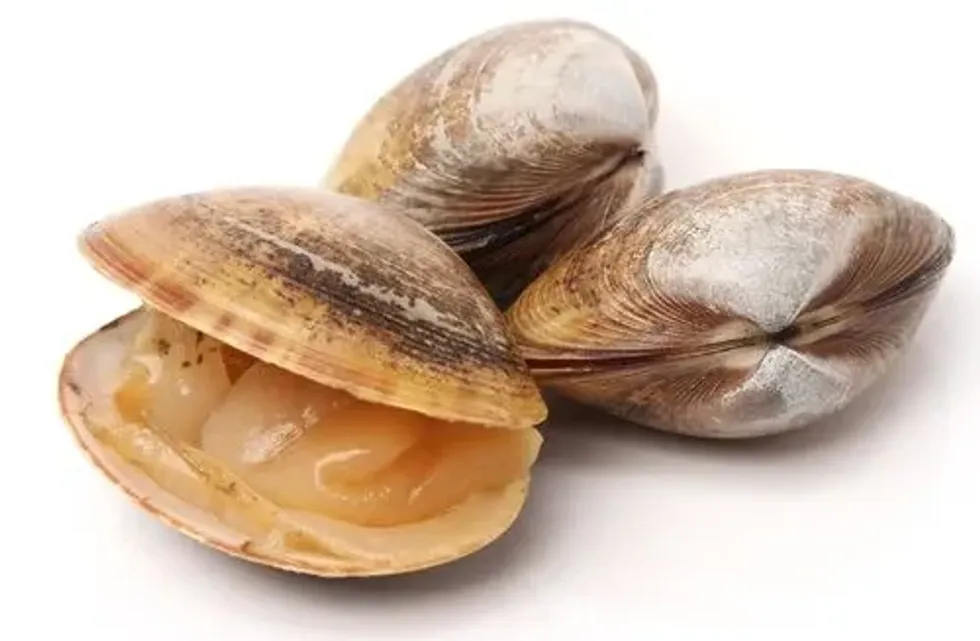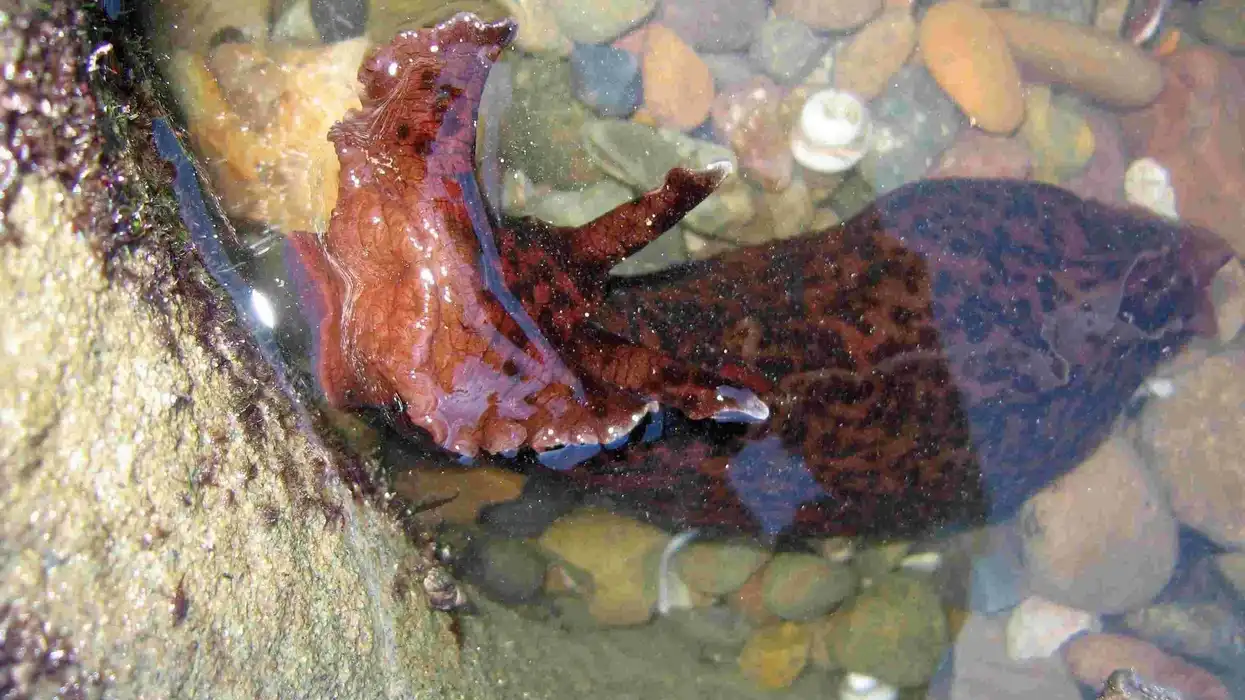Clam is a common name for the different kinds of bivalve mollusks. This word is applied mostly to edible and infauna species who spend most of their lives buried in sand on the seafloor or riverbeds.
Clams have two shells which are of equal size and are bridged by two adductor muscles. Their burrowing feet are very powerful. They live in both marine and freshwater environments.
In places with abundant salt water, like North America, they burrow into the mud and the water turbidity that is required varies with the location and the species. They are found across the world along sea coasts and river shores.
Clams have different life cycles. Some have life cycles as small as one year while for some, it may go up to 500 years. All clams have calcareous valves or shells joined with a flexible ligament near a hinge. All of them are known to be filter feeders.
Included in this article is information regarding the clam pearl, freshwater clam, razor clam, a clam recipe dish known as chowder, as well as freshwater clam facts for kids.
For more relatable content, check out these giant clam facts and mussel facts for kids.
Clam Interesting Facts
What type of animal is a clam?
Clam animals are a type of bivalve mollusks.
What class of animal does a clam belong to?
A clam animal belongs to the class Bivalvia.
How many clams are there in the world?
Clams have a wide range of species, and hence, a large population. However, the number of harvestable clams by humans is about 25-30 million.
Where does a clam live?
Clams live in water bodies like oceans and rivers. They are often found on beaches and shores. Clams live in both freshwater as well as marine habitats.
What is a clam's habitat?
Clam habitat facts differ for different clam species. Clams and mussels are found in nearly all types of freshwater habitats. They are very common in streams and large rivers.
Many of these burrow to varying depths in the soft substrates. They can burrow in the soft substrates due to their characteristic burrowing feet. Some of them also live on the sea floor freely.
Who do clams live with?
There is no information about whether clams live alone or in groups.
How long does a clam live?
Some clam species may live for only a year. Freshwater clams have a 6 month lifespan. Soft shell clams have a lifespan of 10-12 years. Hard clams or quahogs live up to 40 years. Some varieties have a lifespan of 500 years in the sea.
How do they reproduce?
Clams reproduce by a method called spawning. Determining whether clams are male or female might be a complicated classification among some clam species. Some clams are dioecious, while some are protandrous.
Male clams produce sperms that they release in the water, and the female clams have internally stored eggs. Female clams draw the sperms into their bodies through their siphons for fertilization.
Clams can release anywhere between one to five million eggs, which gradually turn to larvae. These larvae metamorphose and develop hard shells. Tiny clams settle to the ocean or river bed and use burrowing feet to attach to the sand or mud.
What is their conservation status?
Nine of the giant clam species are protected by Appendix II of the CITES. However, these giant clams have been declining in their marine habitat.
Giant clams are also listed as Vulnerable by the Red List of the IUCN. They are vulnerable because of aquaculture, the aquarium trade, and extensive food collection.
The Back River Reef Sanctuary has kept natural predators and commercial fishing from preying on hard clams in their area.
Clam Fun Facts
What do clams look like?
Clams are oval-like and circular in their shape. They have two equally sized halves of their shells joined at the hinge by adductor muscles. Clams are unique because they have bodily organs. Clams have a digestive system, a heart, and a circulatory system.
They do not have brains. Clams have a powerful burrowing foot. They all have flexible ligaments and these flexible ligaments are located near the hinges.
Giant clams are known to have many hundred small pinhole eyes on the exposed mantle of their shells. These pinhole eyes are also known as hyaline organs.
The eyes of giant clams (Tridacna gigas) have pinhole eyes that are light-sensitive. This allows them to detect light level changes.
How cute are they?
Clams are an aquatic species of bivalves and are not animal-like in appearance. They cannot be called cute. However, clam shells are beautiful.
How do they communicate?
Clams generally do not communicate amongst themselves. They interact with environments through their pinhole eyes. Small clams have primitive light-sensitive eyes while giant clams have better eye receptors. They often make popping sounds with the opening and closing of their hinged shells.
How big is a clam?
Clams come in a variety of sizes, ranging from 2.7-5.9 in (7-15 cm) The smallest clams are known as juveniles. The common hard clam is about 4-6 in (10.2-15.2 cm) in size, which is about three times the size of a prawn.
Can a clam move?
Clams can move on the sand or mud floors using their burrowing foot. It retracts the foot and squirts water from the shell and closes its open valves using adductor muscles. Apart from that, they use ocean currents and waves to be transported at greater speeds. The speed and direction cannot be controlled by the clam.
How much does a clam weigh?
A giant clam weight equals as much as 507 lb (230 kg). On the other hand, the hard clam weighs around 0.352 oz (10 g). Thus, clams can have a wide range of weights depending on the size of the clam shell.
What are the male and female names of the species?
Both male and female clams are called clams.
What would you call a baby clam?
Baby clams are called larva. After metamorphosis under the sand or mud, they turn into juvenile clams.
What do they eat?
Clams are mostly suspension feeders. They feed on plankton which are small animals and plants. They draw these in with water. Giant clams are preyed upon by organisms like oyster drills, skates, pufferfish, moon snails, and whelks. The polychaete worm and certain other parasites cause blisters inside the shell of clams. This results in death indirectly.
Are they edible?
Yes, many species of clams are edible and relished as seafood. Clam chowder, clam sauce, and steamed clams are some popular clam recipes. Razor clams, a species found in the Pacific Ocean, have brittle shells and are almost completely edible. Littlenecks are eaten raw or grilled.
Would they make a good pet?
Clams are kept by hobbyists or in aquaculture farms for yielding pearls. Freshwater clams like Asian gold clams are a good pet for aquariums and are available in pet stores.
Did you know...
Although mostly pearls are drawn from an oyster and not a clam, there are some freshwater clams or mussels that develop pearls. Clam pearls occur in colors like white and pink, and are formed in the same way as they are in oysters. Wild clam pearls are more common than aquaculture clam pearls.
Clams are good for you as they are a rich source of protein, minerals, Omega- 3 fatty acids, and vitamins.
Clams generally can't breathe out of water, but they can live for months or years out of water by shutting down all except essential body functions.
Littleneck clams are one of the smallest clams among hard clams which are eaten raw or grilled.
The US state of Rhode Island has the quahog as its natural fish.
How does a clam eat?
Clams eat through the siphon aided suction method. The clam buries under a layer of silt and mud. It then sticks out its siphons up through the muck surrounded.
The siphon which is capable of suction, draws in water which then passes over the gills. Millions of hair-like structures called the cilia then assist the water to move across the gills.
The food particles are then caught in the mucous sheet which coats the gills. This mixture of food and mucous passes along a groove above their feet and goes to a pair of muscles called the palps. These palps ultimately force the food mixture into the mouth.
Do clams have eyes?
Clams have many eyes with some species having hundreds of eyes. They need this many eyes to save themselves from predators by detecting them in each direction.
Here at Kidadl, we have carefully created lots of interesting family-friendly animal facts for everyone to discover! Learn more about some other arthropods from our freshwater mussel facts and oyster facts pages.
You can even occupy yourself at home by coloring in one of our clam coloring pages.








